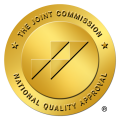How to Implement Pain Management Practices at Your Facility
Pain management is a growing issue in the healthcare industry. In this blog post, we will cover what you need to know in order to implement and improve the pain management practices in your facility.
Types of Pain
Acute Pain
Acute pain starts suddenly and lasts for a short period. Generally, it is a sign of tissue injury and resolves when the tissue heals. Some examples of acute pain include:
- Broken bone
- Injuries due to car crash or other accident
- A fall
- Burns or cuts
- Dental work
- Labor and childbirth
- Surgery
Chronic Pain
Chronic pain is pain that persists for more than 3 to 6 months. In 2019 in the US alone, 20.4% of adults had chronic pain, and 7.4% of adults had chronic pain that frequently limited life or work activities in the past three months.1 It can appear due to arthritis, back pain, fibromyalgia, cancer, and diabetes.
Who Needs Pain Management
Chronic and acute pain management is recommended for every patient whose pain has led to:
- Mobility impairments
- Self-care impairments
- Inability to perform job duties
- Mental health issues
- Dependence on opioids
- Poor perceived health
- Reduced quality of life
Pain Management with Substance Use Disorder
In some cases, particularly when the patient suffers from severe pain, they may be prescribed an opioid analgesic like morphine. Opioids are potent drugs that can help manage pain. At the same time, they must be used wisely under a physician’s supervision due to their risk for addiction.
If a patient takes opioid analgesics for an extended period of time, they may build a tolerance to the drug. In other words, they will require higher doses to experience the same degree of pain relief.
Physical dependence is another side effect of opioid analgesics. If the patient stops taking the drug abruptly, they will experience a range of withdrawal symptoms, such as jitters, shaking, and high heart rate.
How Pain Can Drive Cause Substance Abuse
Substance use disorder (SUD) happens when the patient cannot stop their addictive behavior, even though it is causing them psychological and physical harm. It involves stealing, cheating, and lying just to get access to the drug because of its reinforcing effects. SUD is a disease of the brain that changes how the brain processes reward, motivation, and memory.
According to the National Institute on Drug Abuse, around 2 million Americans abuse opioids, and more than 90 Americans die from an opioid overdose every day.2
Pain Management Drugs That Can Trigger a Relapse
Offering pain management to patients with a history of substance abuse presents unique challenges.
A prior addiction to opioids increases the risk of an opioid addiction relapse, and exposure to a former drug of choice can be a powerful trigger. Physicians are aware that inadequate pain management may force the patient to try to manage their pain through illicit drug use.3
Some pain management drugs that can trigger a relapse include:
- Alfentanil
- Fentanyl
- Hydrocodone
- Hydromorphone
- Methadone
- Morphine
- Oxycodone
- Oxymorphone
- Sufentanil
How To Manage Pain If You Are In Recovery
The use of analgesic drugs is just a small part of managing patients with pain. Alternative types of pain treatments that do not involve any pain medicines are also available to those in recovery seeking relief from their pain.4
Physical Therapy
Physical therapy involves the use of stretching exercises and manual therapies to ease muscle tension. Other forms include electrotherapy, ultrasound, and laser treatments which can also provide pain relief.
Yoga
Yoga is a physical form of exercise that combines meditation and breathing techniques to promote self-awareness. It can relieve pain caused by conditions such as arthritis, fibromyalgia, migraine, low back pain, and other chronic pain conditions.
Mind-Body Therapies
Mind-body therapies involve the linking of physical and emotional well-being to achieve balance. These healing methods enhance how your mind interacts with the body, inducing relaxation while improving overall health and wellness. Some popular mind-body therapies include relaxation, hypnosis, visual imagery, meditation, biofeedback therapy, cognitive behavioral therapy, alongside expressive arts such as art, music, and dance.
Acupuncture
Acupuncture is an ancient Chinese practice where thin needles are inserted into the body at specific points called “acupoints.” It can ease chronic pain and muscle spasms as well as reduce stress hormones.
Massage Therapy
Massage therapy is a form of treatment that relieve tension and pain in the muscles by manipulating them through pressure. Therapists use their fingers, thumbs, or elbows to apply different levels of pressure on the body’s soft tissues. Massage therapy can lead to reduced muscle spasms and improved range of motion.
When is a Prescription Necessary?</
Despite their risk for addiction, chronic pain management medications such as opioids remain an important option for managing pain. They can be a safe and powerful pain reliever in certain situations and when prescribed for short periods of time.
Opioid medications are recommended for patients suffering from sudden, acute pain due to surgery or a traumatic injury. In such cases, they are only used for a few days.
Opioids can also be an effective pain treatment option for patients dealing with cancer-related pain. Patients with poorly managed cancer pain are often faced with prolonged and repeated hospital stays and difficulty managing their daily life. Opioid pain treatment can be critical in improving the quality of life of these patients.
Finally, in some rare cases, opioids can be prescribed to patients with chronic non-cancer pain who have not responded well to other types of pain medicines and consequently struggle with a low quality of life.
Spotting Drug-Seeking Behaviors
- Insisting on getting their prescription filled immediately, even if they do not have an emergency situation.
- Requesting to have the dose increased.
- Getting angry and irritated when asked about pain symptoms.
- Claiming allergies or adverse reactions to every other medication you offer them as an alternate pain treatment plan.
- Forging prescriptions.
- Asking for early refills.
- Objecting strenuously to having any urine drug screens.




